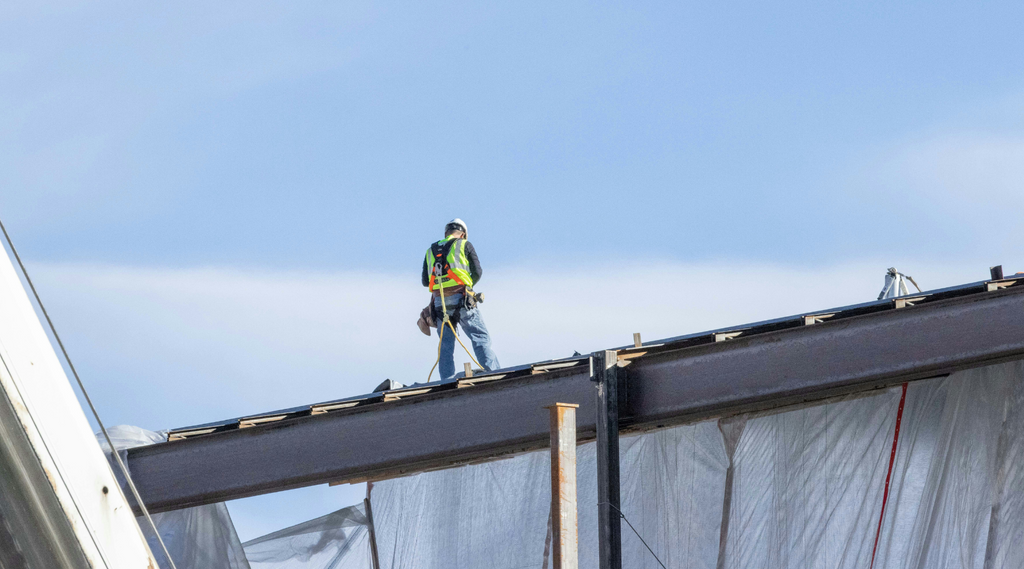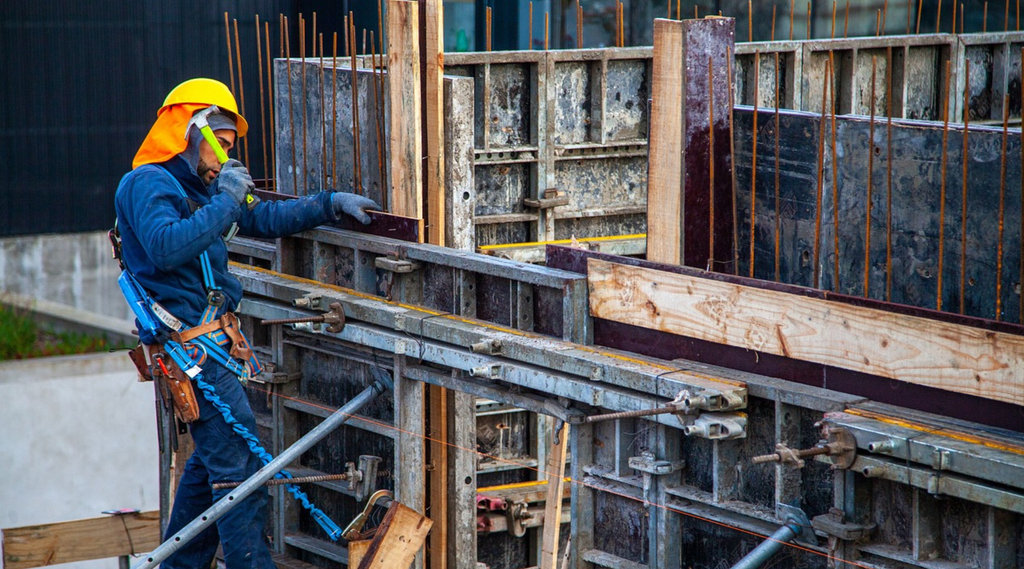
In today's rapidly evolving construction and maintenance industries, the importance of roof safety cannot be overstated. Ensuring the safety of workers who operate at heights is a fundamental aspect of operational excellence and ethical responsibility.
With the increasing awareness and implementation of safety measures, the focus on protecting individuals from falls, slips, and other potential hazards has become paramount. This article will cover essential strategies, tools, and protocols that are pivotal in maintaining a secure environment on rooftops, highlighting the critical role of roof safety in safeguarding lives and enhancing work efficiency.
Top 10 Essential Roof Safety Tips
1. Adhering to OSHA Roof Safety Regulations
Ensuring roof safety is a critical component of construction work, and it’s governed by OSHA regulations. These rules are essential measures designed to prevent workplace accidents and fatalities.
Staying current with OSHA roof safety standards is vital for maintaining a safe work environment. This involves regular training on the use of personal protective equipment, conducting safety audits to identify potential hazards, and developing a comprehensive fall protection plan tailored to the specific needs of each worksite. By understanding and adhering to these regulations, employers and workers can ensure a culture of safety and compliance is consistently upheld.
2. Use of Personal Protective Equipment (PPE)
The comprehensive use of PPE is a non-negotiable roof safety standard. A roof safety harness is a critical component of this equipment, providing a lifeline for workers operating at dangerous heights.
Adherence to PPE protocols, including the roof safety harness, not only aligns with OSHA standards but also serves as the last line of defense against falls, the leading cause of fatalities in roofing work. By equipping workers with the necessary PPE and ensuring proper use through regular training and vigilance, employers can significantly mitigate the inherent risks of roofing operations.
3. Selection and Maintenance of Proper Equipment
Regular maintenance checks guarantee that all safety gear remains in optimal condition, ready to protect workers from the inherent dangers of roofing. A preventive checklist for safety should include inspection of roof safety harnesses for wear and damage, verification of the stability and integrity of ladders, and ensuring that anchorage points are secure. By meticulously selecting and maintaining roof safety equipment, employers uphold OSHA’s rigorous standards and safeguard their workforce against potential hazards.
4. Implementing Fall Protection Measures

Implementing comprehensive fall protection measures is a cornerstone of roof safety. Guardrails, safety netting, and personal fall arrest systems are part of a comprehensive safety system that protects workers by layering different forms of fall protection.
Guardrails provide a physical barrier to prevent falls, safety netting offers a secondary level of fall protection, and personal fall arrest systems act as a last resort to safely stop a fall in progress. These measures significantly enhance worker safety, ensuring that if one system fails, another is in place to prevent a catastrophe. Regular training on the correct installation and usage of this equipment is essential, reinforcing a culture of safety and vigilance on the roofing worksite.
5. Ensuring Safe Footing and Movement
Ensuring safe footing and movement on a roof is a critical aspect of roof safety. Appropriate footwear, specifically designed for roofing, provides both safety and comfort, allowing workers to navigate steep or slippery surfaces with confidence.
Select boots with non-slip soles and adequate ankle support to prevent slips and falls, especially in challenging weather conditions. Moreover, workers should be trained in proper roof-walking techniques, such as maintaining a low center of gravity and making deliberate, well-balanced movements, to safely traverse the roof and minimize the risk of accidents.
6. Importance of Proper Training and Education
Proper training and education are the bedrock of roof safety, playing a pivotal role in accident prevention. Thorough training encompasses formal education on safety protocols and practical, on-the-job training to ensure workers are well-versed in the latest safety practices. Continuous learning can be facilitated through resources such as OSHA roof safety guidelines, safety workshops, and online courses that focus on the nuances of roof safety.
7. Weather Awareness and Adaptation
Workers must be equipped to assess and respond to various weather-related risks, such as slippery surfaces due to rain or the brittleness of materials in extreme cold. Guidelines for safe roofing include monitoring weather forecasts, having emergency procedures for sudden changes, and using corrosion-resistant materials in wet environments.
Clear rooftops of hazards like leaves that can become slippery, and ensure all roof safety equipment, including lifelines and anchors, are inspected after any incident. These proactive measures help maintain a safe working environment regardless of weather challenges.
8. Effective Communication Strategies
A hazard communication plan is a critical safety net that ensures all team members are synchronized, especially in high-risk environments. The incorporation of technology, such as real-time messaging apps and specialized roofing software, facilitates instant updates and alerts, which are essential for coordinating tasks and responding to emergencies swiftly.
Emergency signals, both auditory and visual, must be standardized and understood by all to prevent accidents and ensure quick evacuation or assistance. Establishing clear lines of communication among team members, and with emergency contacts, is vital. This involves not only the initial setup of hazard communication channels but also regular drills and training to ensure everyone is adept at using these systems under pressure.
9. Pre-Work Inspection and Hazard Assessment

A pre-work inspection and hazard assessment are cornerstones of roof safety, serving as the first line of defense against workplace accidents. Before any roofing activity commences, conduct a thorough inspection to identify potential hazards. This includes examining the roof for structural integrity, checking for loose materials or debris, ensuring proper installation and condition of guardrails, and verifying that all access points are secure.
Assess the weather conditions to anticipate any risks posed by environmental factors. Implementing a routine inspection schedule ensures ongoing vigilance, while diligently documenting these findings creates a valuable record that can inform safety protocols and training.
10. Creating a Culture of Safety
Creating a culture of safety within the roofing industry is not just for compliance with regulations but for the well-being of all stakeholders involved. It begins with leadership commitment, where the tone set by management underscores the critical nature of roof safety. Regular, comprehensive safety training ensures that all employees are equipped with the knowledge to identify and mitigate risks.
Encouraging employee involvement in safety discussions and decision-making fosters a sense of collective responsibility. It’s essential to recognize that safety is not a one-time effort but a continuous journey that requires diligence and adaptability. By promoting a safety mindset, from the use of non-slip footwear to the adherence to fall protection protocols, a roofing business can significantly reduce accidents and create an environment where safety is the norm, not the exception.
The roofing industry needs to focus on continuous learning and practice of roofing safety protocols. It's important to make roof safety a big part of the company culture. This not only makes the workplace safer but also helps get the job done better and more efficiently.
Following OSHA safety requirements is a must, but companies should go even further to protect their workers. This means regular inspections and training on roofing safety and making sure every project follows the highest safety standards. By keeping up with OSHA requirements and making sure everyone is up to date with the latest workplace safety practices, companies can ensure that their projects are both safe and high-quality.
Roof Safety FAQs
What are the OSHA rules for roofing?
OSHA's guidelines for roofing focus on ensuring the safety of workers from fall hazards. This includes requirements for fall protection equipment for any work over 6 feet above a lower level, safety training, and the proper use of ladders and personal protective equipment.
What are the safety issues with roofing?
The main safety issues with roofing include the risk of falls from heights, slips and trips on the roof surface, exposure to hazardous materials, and the potential for heat stress on sunny days. These risks necessitate strict adherence to safety protocols.
Are roofers required to wear harnesses?
Yes, roofers are required to wear safety harnesses when working on surfaces more than 6 feet above a lower level. This is part of OSHA’s fall arrest systems, which aim to prevent injuries from falls.
What is the most protective measure for roofers?
The most protective measure for roofers to ensure safety is the implementation of a comprehensive fall protection system. This includes the use of personal fall arrest systems (such as safety harness), guardrails, safety nets, and thorough safety training to prevent falls and injuries.
